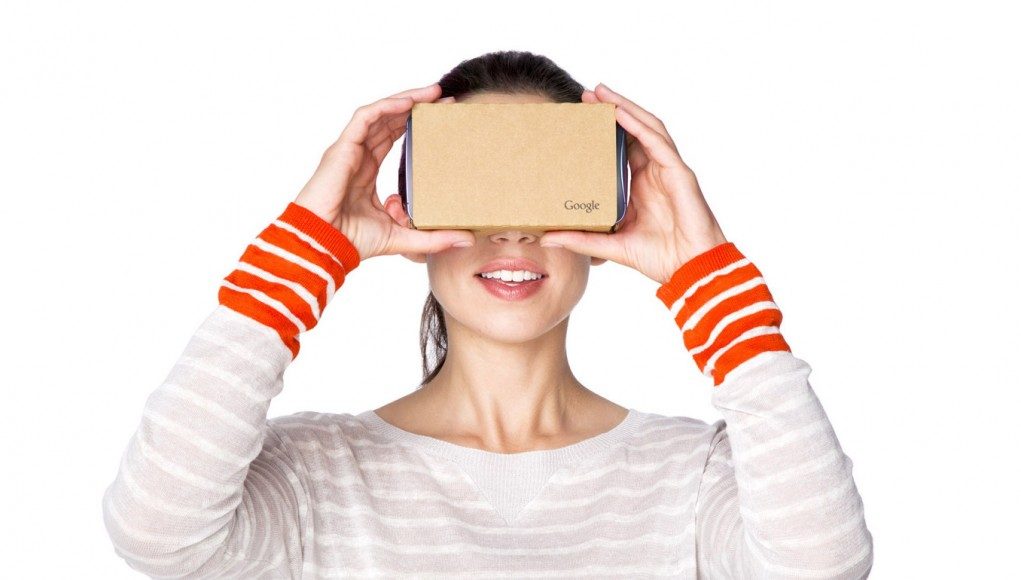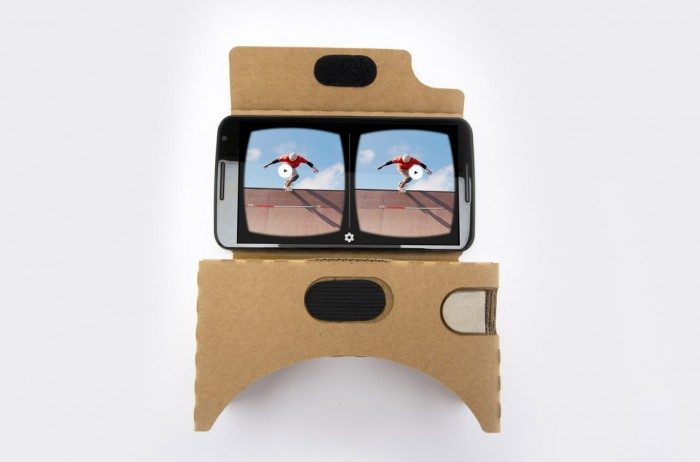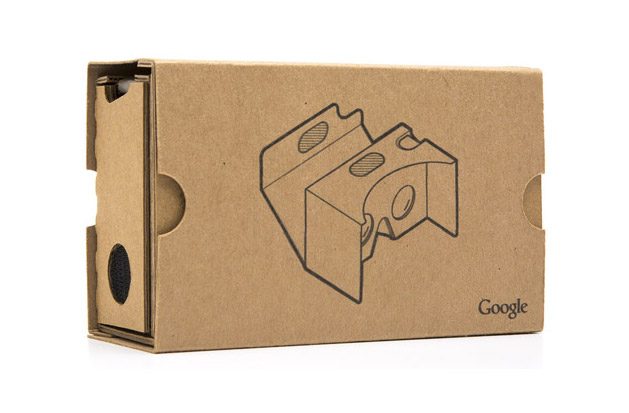At Google’s I/O 2015 developer conference today, Clay Bavor took to the stage to update the world on the company’s VR developments and has revealed a new and improved Cardboard VR viewer for smartphones.
Google announced the Cardboard viewer and project one year ago, at Google I/O 2014. The viewer was released alongside a software development toolkit as a very low cost entry into virtual reality for developers and enthusiasts. Today the company said that in the last year, smartphones have gotten bigger, many of them no longer fitting the original Cardboard viewer.
The Cardboard v2 viewer, which the company announced today at its I/O 2015 Keynote, now fits phones up to 6-inches. The magnetic ring input has also been replaced with a universal input button that the company says will work with all phones.
The first version of Cardboard had a novel input method that utilized the magnetic ring which, when pulled, could be sensed by a phone’s magnetometer and read as an input event. Unfortunately, this meant that the magnetometer couldn’t be used for drift correction. The new button not only works with all phones (some of which could not properly detect the previous method), but also frees the magnetometer to help keep the virtual view from drifting.
The new universal input button ought to be a boon to developers, many of which opted not to support the ring input method because few other VR smartphone viewers used the same system. As the v2 viewer spreads, input will be more consistent and developers may use the new input method in addition to gaze-based selection systems that many have fallen back upon.
The Cardboard v2 viewer now assembles easily in three steps, instead of the 12 steps of the v1. The new viewer will be given to all I/O 2015 attendees, but as with v1, Google isn’t selling the cardboard device. Instead, the company has worked with third-party manufacturers who create Cardboard-based iterations that are certified to work properly with Cardboard apps.










